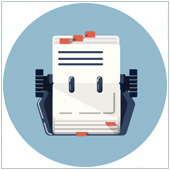People today are relying on their iPhones more than ever before, especially when it comes to keeping contact information like names, numbers, and email addresses. Despite its ease of access, having to update your contact information every time someone changes their number can be a pain. And what do you do if your iPhone breaks or get stolen? Bear this in mind when we take a look at five essential apps that’ll help keep your iPhone’s address book secure and convenient for contact management and recovery.
Five Essential Apps To Boost Your IPhone Address Book’s Capabilities:
- Contacts+ (Free): This app lets you sort contacts into groups and import personal information from Facebook and LinkedIn. A quick tap lets you jump to a contact’s social networking profile, or even map a live route to their home or office. It also adds birthdays to your contact list.
- Sync.ME (Free): Sync.ME brings widgets to your iPhone’s Contacts app, adding a powerful set of tools that let you do everything from capturing business cards by photograph to recording some phone calls. This is particularly helpful when it comes to recalling previous conversations and connecting names with faces.
- Cloze (Free): Cloze compiles Twitter updates, Facebook posts, LinkedIn snippets, text messages and emails from each of your contacts, then combines all of it into one master feed, organized by person rather than by time. It automatically figures out who the most important people in your network are and puts their information at the top of the feed.
- ABBYY Business Card Reader (USD $5.99): Contrary to today’s digital world, old-school business cards are still an essential. And while transcribing cards into digital data is time consuming, ABBY does exactly that in a flash. Just snap a photo of each card and this scanning system instantly does the translation work, bringing contact information on business cards right into your iPhone’s address book.
- iCloud (Free): iCloud is Apple’s cloud storage app that everyone with an Apple account has access to. Chances are high that when you first setup your device, you signed up for an Apple account in order to purchase/download apps from iTunes. On your device, open the Settings app and select iCloud. Enable it and login with your Apple account and you should be able to backup important data, including contacts. If you lose your device, or get a new one, simply log into your account again, and your contacts should pop right up.
While iPhone’s address book is a convenient tool for contact management, pairing it with these applications will not only make it more powerful but also more secure, so you won’t have to worry about losing your contact information or missing out on updated information again. Looking to learn more about iPhone and its features? Contact us today and see how we can help.
Published on 13th January 2014 by Jeanne DeWitt.


